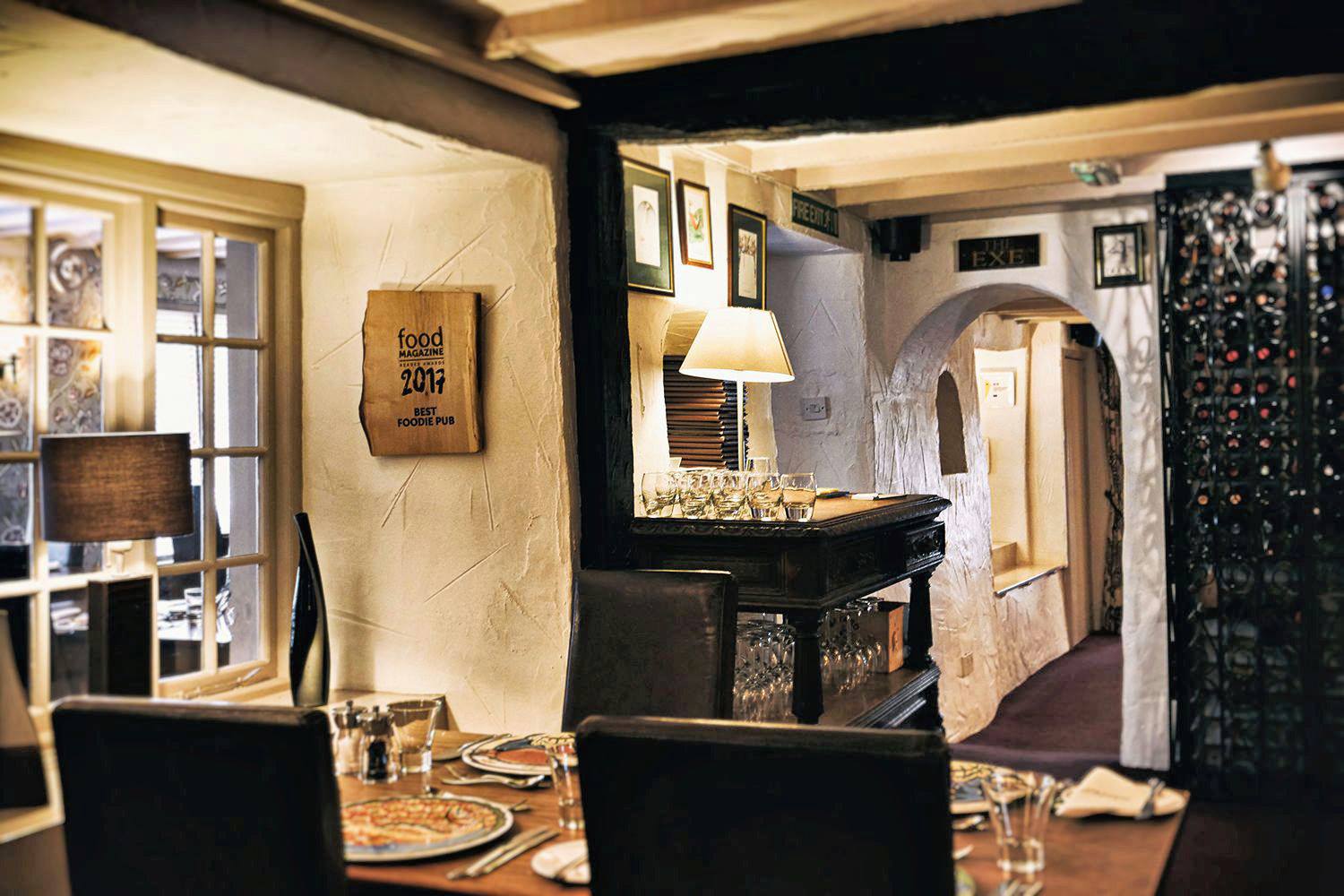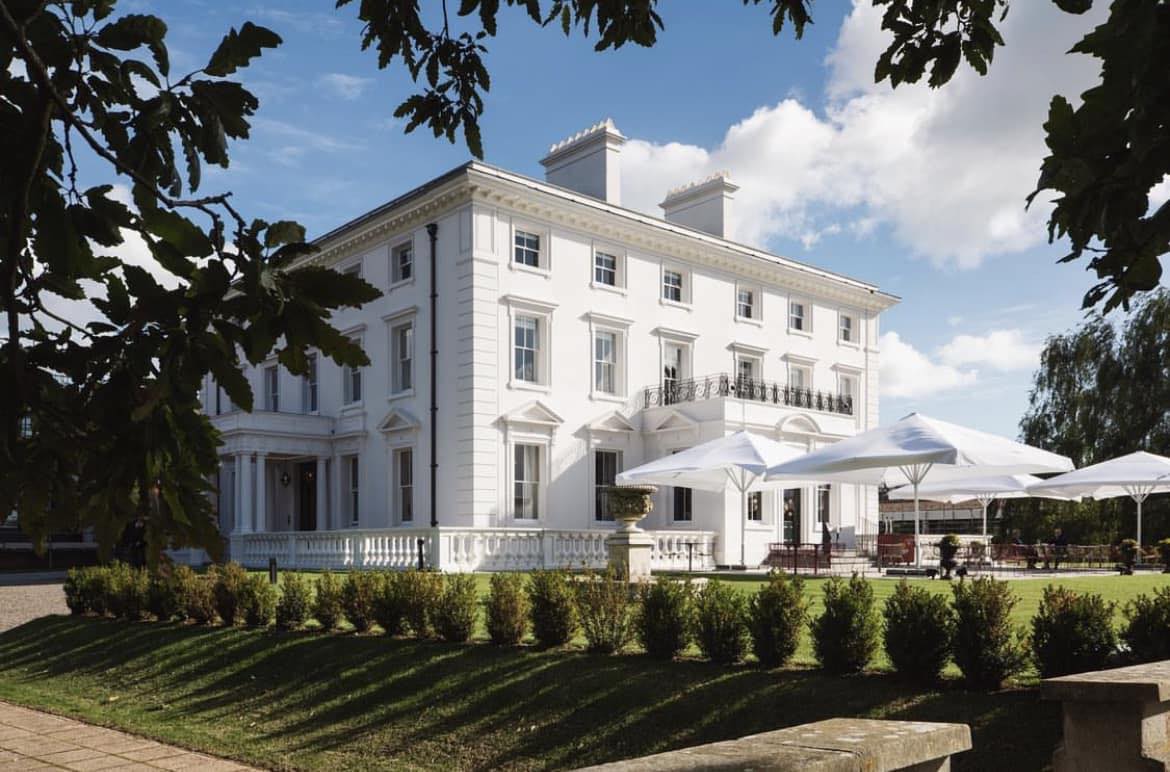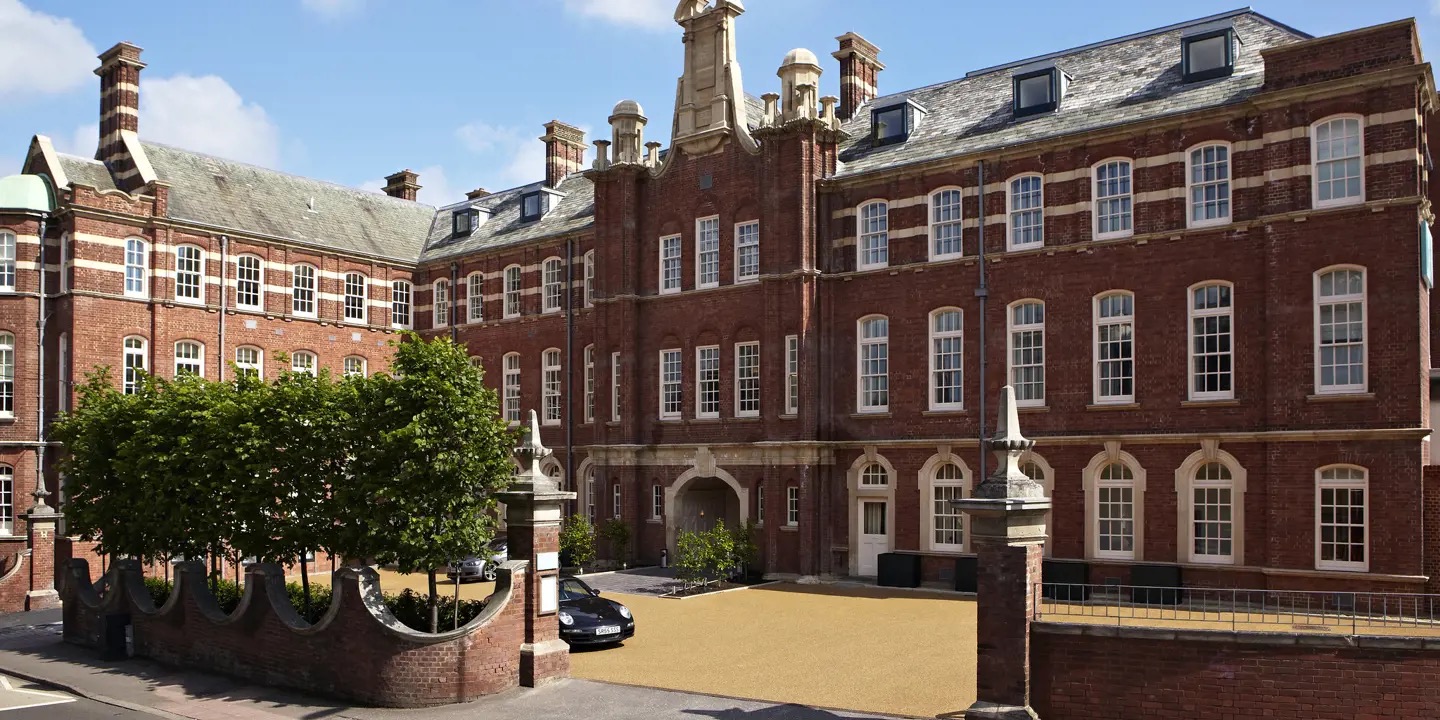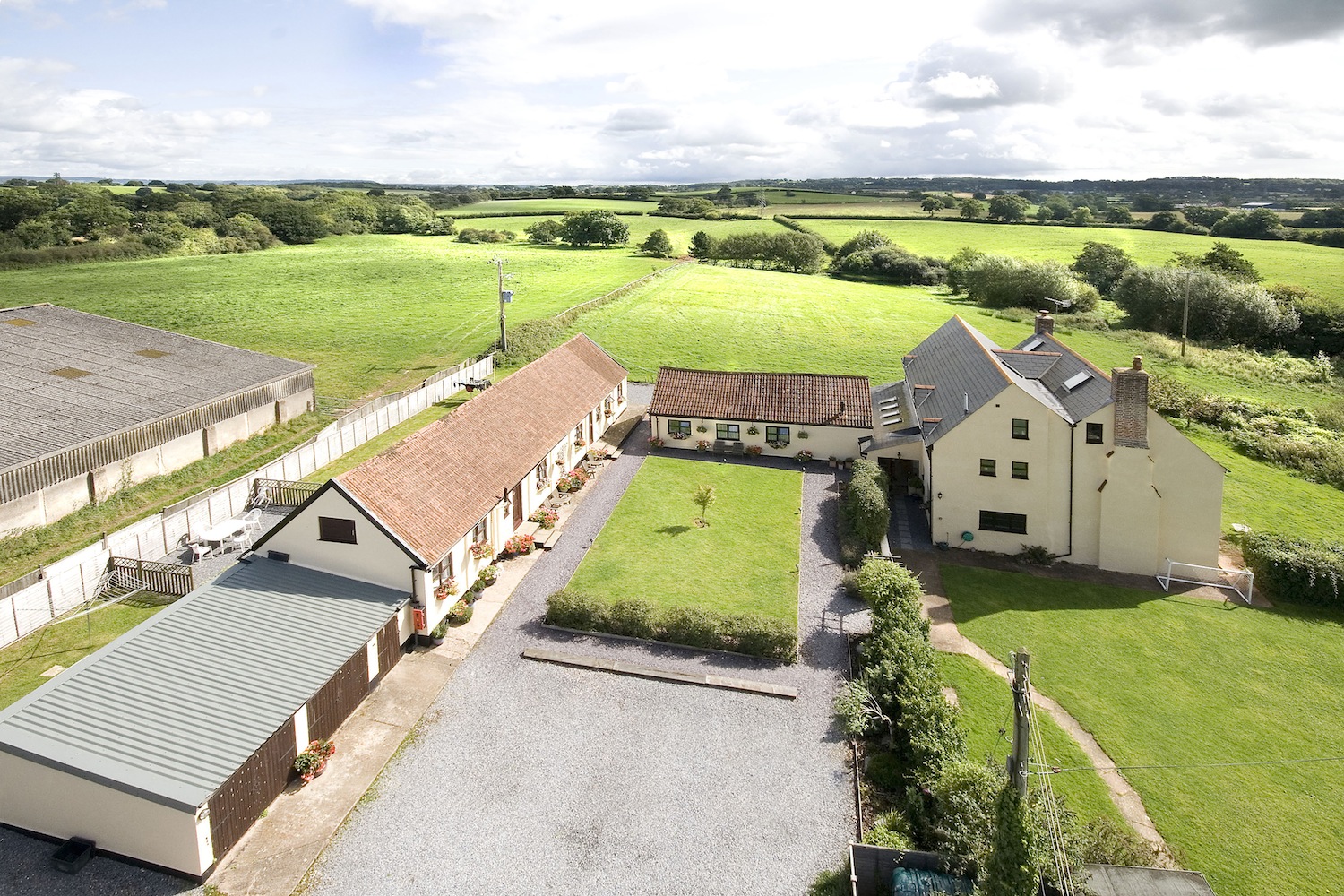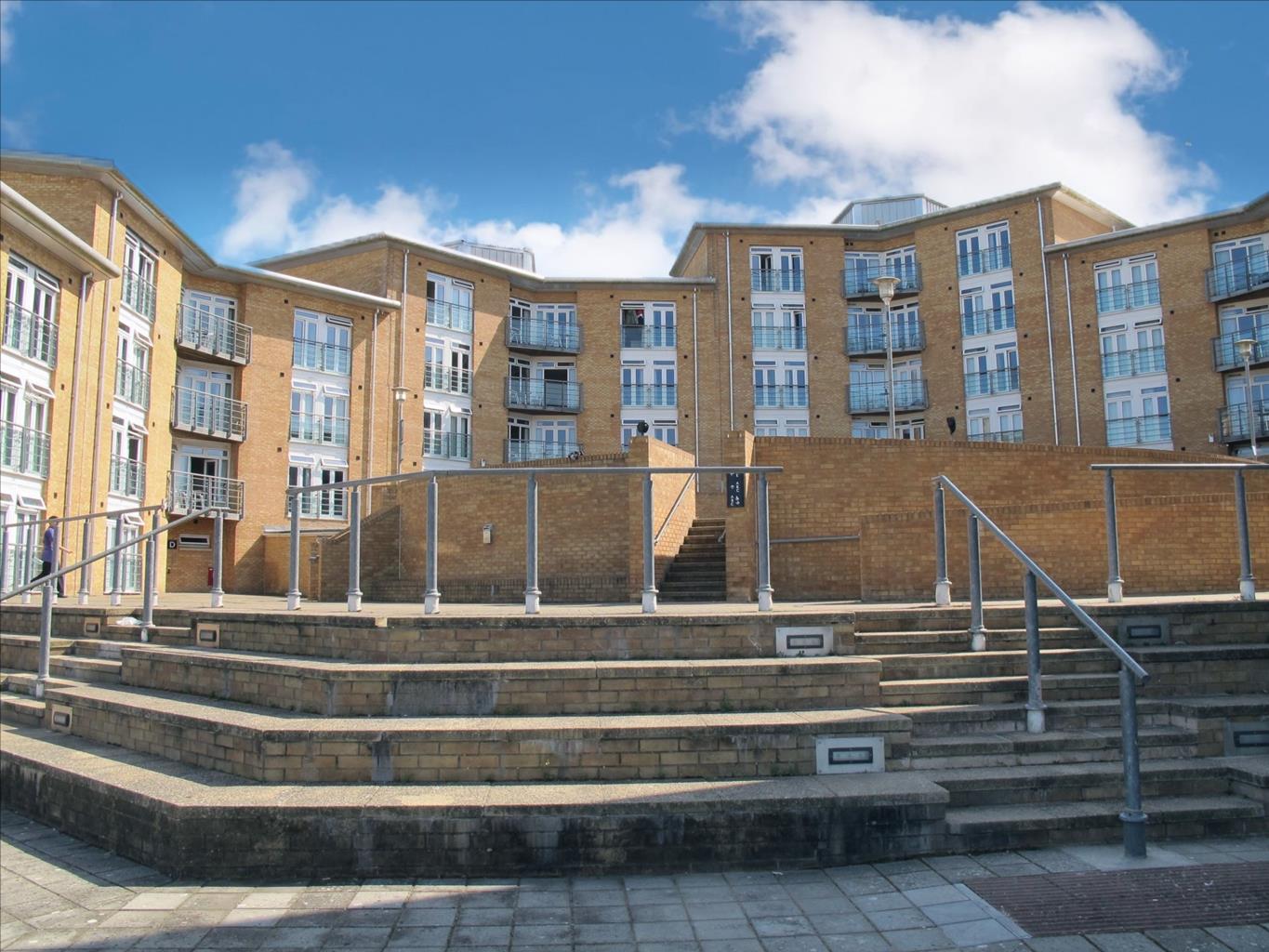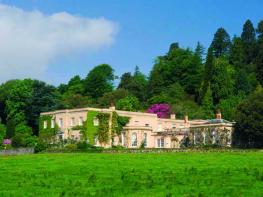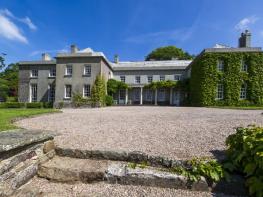There are three comfortable single storey cottages named after the local villages of Whimple,…
Around Killerton Park

4.5 miles (7.2kms)
About the walk
This gentle exploration of the countryside around the National Trust estate at Killerton, just north of Exeter and given to the Trust by Sir Richard Acland in 1944, uses a variety of public footpaths and bridleways, but does not give access to the gardens; if you wish to visit them you must pay an entrance fee (NT members free). Killerton was formed by the Acland family and their original house (only the gatehouse and chapel remain) was at Columbjohn, and was used by the King’s troops during the siege of Exeter in the Civil War.
Killerton is well worth a visit: quite apart from the house – rebuilt in 1778 to the design of John Johnson – and delightful gardens (with colour-coded waymarked walks) there is a National Trust shop, tea room and plant centre in the old stable block and courtyard, as well as a playground, orchard and picnic area. The whole estate covers 6,400 acres (2,591ha) and includes Ashclyst Forest, 2 miles (3.2km) to the east (with waymarked walks), the Red Lion Inn in Broadclyst, to the south, and the disused paper mill by Ellerhayes Bridge.
The park and gardens at Killerton were created in the late 18th century, making full use of the contours of the natural landscape, and are characterised by a wide variety of exotic tree species, including tall Wellingtonias (named after the Duke of Wellington). The gardens feature magnolias, azaleas and rhododendrons on the wooded slopes above the house, and superb herbaceous borders on the lower levels. As you enter the parkland at Point 2 you pass some splendid examples of cedar of Lebanon and holm oak, and a beautiful weeping willow on an island in a pond (on the left).
Just past the house the walk leads uphill near the memorial to Sir Thomas Dyke Acland, and you can enjoy good views west towards the Exe Valley and beyond to Cosdon Hill on Dartmoor. In Columbjohn Wood badger tracks abound, and in spring the air is heavy with the scent of wild garlic and bluebells. You may glimpse roe deer; you will certainly hear the deep croak of ravens, and the mewing cry of a buzzard soaring overhead. But look out for the dragon which travels by underground tunnel between the twin Iron Age hill forts of Dolbury Hill, which lies just north of the house in the centre of the estate (not visited) and Cadbury Castle, 6 miles (9.7km) to the northwest.
Walk directions
From the car park return to the road and turn right to reach the gate and cattle grid at the entrance to Killerton house. Follow the public footpath across the park, parallel to the drive, passing the stable courtyard from where ticket holders approach the house.
Continue across the park to pass to the left of the house and keep straight on, past formal gardens. Towards the end of the park bear half left to pass through a kissing gate in the hedge ahead, into a large sloping field.
Turn right uphill, keeping by the hedge and then an iron fence on your right. At the top of the field ignore the public footpath sign and ‘Bluebell Gate’, and turn left down across the field to enter Columbjohn Wood through a small gate.
Turn left, and immediately branch left again on the higher path round a wooden barrier, which leads gradually downhill. Leave the wood by another kissing gate, and keep straight on to meet Point 6 and follow a farm track. After 250yds (229m) go right as signed through a gate onto a fenced path. Pass a cottage to arrive at the peaceful 16th-century Columbjohn Chapel.
Go through a kissing gate to gain the grassy drive on the other side of the chapel, and take a look left at the old arched gatehouse. Retrace your steps through the field back to the track junction.
Keep ahead and follow this delightful track through woods and fields around the edge of the estate, above the River Culm. (A cycle track bears off right through a gate where indicated on the map: a good alternative if the main track is too wet.) The track reaches the road by Ellerhayes Bridge.
Do not go on to the road; turn right to follow the edge of gently ascending parkland, keeping the road on your left. You will pass through several gates on a NT bridlepath, which eventually goes through two gates to join a gravel track. Turn left downhill to find the entrance to the Chapel of the Holy Evangelists, built in the Norman style in 1842 for the Aclands, their tenants and employees, and to replace the one at Columbjohn.
Continue on down the road. Turn right at the junction, and right again into the car park.
Additional information
Good footpaths, bridleways and farm tracks
Gently undulating woodland and parkland
Keep on lead
OS Explorer 114 Exeter & the Exe Valley
National Trust car park
Between car park and stable courtyard
WALKING IN SAFETY
Read our tips to look after yourself and the environment when following this walk.
Find out more
Also in the area
About the area
Discover Devon
With magnificent coastlines, two historic cities and the world-famous Dartmoor National Park, Devon sums up all that is best about the British landscape. For centuries it has been a fashionable and much loved holiday destination – especially south Devon’s glorious English Riviera.
Close to the English Riviera lies Dartmoor, one of the south-west’s most spectacular landscapes. The National Park, which contains Dartmoor, covers 365 square miles and includes many fascinating geological features – isolated granite tors and two summits exceeding 2,000 feet among them.
Not surprisingly, in Dartmoor the walking opportunities are enormous. Cycling in the two National Parks is also extremely popular and there is a good choice of off-road routes taking you to the heart of Dartmoor and Exmoor. Devon’s towns and cities offer stimulating alternatives to the rigours of the countryside.
Nearby stays
Restaurants and Pubs
Nearby experiences
Recommended things to do
Why choose Rated Trips?
Your trusted guide to rated places across the UK
The best coverage
Discover more than 15,000 professionally rated places to stay, eat and visit from across the UK and Ireland.
Quality assured
Choose a place to stay safe in the knowledge that it has been expertly assessed by trained assessors.
Plan your next trip
Search by location or the type of place you're visiting to find your next ideal holiday experience.
Travel inspiration
Read our articles, city guides and recommended things to do for inspiration. We're here to help you explore the UK.

